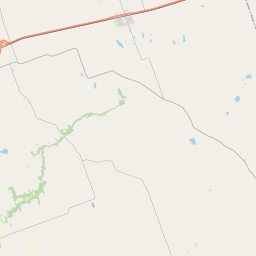The Tenth Street United Methodist Church
Historical marker location:






Services conducted in 1896-98 by the Rev. C. Charnquist in homes of Taylor's early settlers let to the founding (1900) of the Swedish Methodist Church, North. Buying the chapel of a disbanded group, the congregation increased, moving their church to this site in 1911. Membership stabilized at about 240 in the 1920s. In 1935 English became the language in regular use. National religious trends led to name changes. The interior of the sanctuary was remodeled in 1950; annex added in 1963. Twenty-eight pastors have served this church
As one of the most visible programs of the Texas Historical Commission (THC), historical markers commemorate diverse topics in Texas history, including: the history and architecture of houses, commercial and public buildings, religious congregations, and military sites; events that changed the course of local and state history; and individuals who have made lasting contributions to the state, community organizations, and businesses.
Texas is known for its barbecue, and one of the most famous barbecue restaurants in the state is Kreuz Market in Lockhart. The restaurant has been in operation since 1900 and is still family-owned.
The region was first settled by European pioneers in the mid-19th century. The establishment of Fort Tumlinson in 1839 provided protection to settlers, and the population grew steadily with the arrival of more immigrants in search of new opportunities. In 1848, the county was officially organized and named after Robert McAlpin Williamson, a judge and soldier in the Republic of Texas.
During the Civil War, Williamson County faced significant challenges. Many residents joined the Confederate Army, and the county became a hotbed of conflict due to its location on the frontier between Union and Confederate territories. After the war, the area was able to rebuild and experienced a period of economic growth, driven by agriculture, cattle ranching, and the emergence of small towns and rural communities.
In the 20th century, Williamson County continued to develop and adapt to changing times. The discovery of oil in the early 1900s brought economic prosperity to the region, and the county experienced a boom in population and infrastructure. Today, Williamson County is a thriving part of the greater Austin metropolitan area, known for its strong economy, vibrant communities, and commitment to preserving its historical roots.
Williamson County Timeline
This timeline provides a condensed summary of the historical journey of Williamson County, Texas.
- 1804 - The area that is now Williamson County is settled by Native American tribes, including the Tonkawa, Lipan Apache, and Comanche.
- 1836 - Texas gains independence from Mexico.
- 1838 - The Texas legislature establishes Williamson County, named after Robert McAlpin Williamson, a leader in the fight for Texas independence.
- 1848 - The Mexican-American War ends and the Treaty of Guadalupe Hidalgo is signed, officially establishing the Rio Grande as the boundary between Texas and Mexico.
- 1850 - The population of the county reaches 1,027.
- 1876 - The Texas State Capitol building is completed in Austin, which becomes the seat of government for Williamson County.
- 1881 - The International-Great Northern Railroad reaches Georgetown, bringing economic growth and development to the county.
- 1907 - The county courthouse, located in Georgetown, is completed.
- 1930s - The Great Depression hits Williamson County, causing a decline in the local economy.
- 1950s - The county experiences a period of growth and prosperity, with the population increasing significantly.
- 1990s - Development and suburbanization accelerate in Williamson County, with the county becoming one of the fastest-growing areas in the United States.